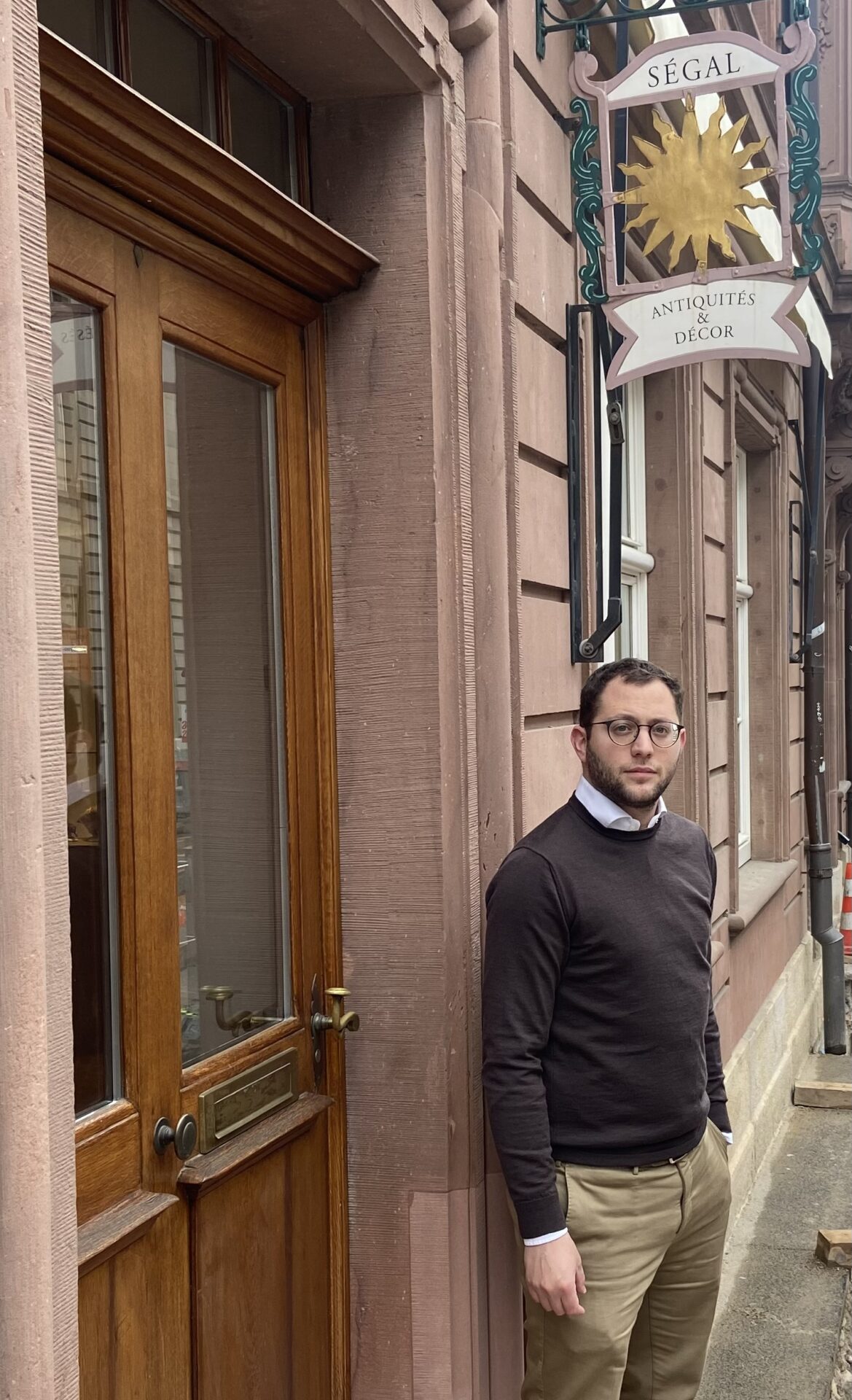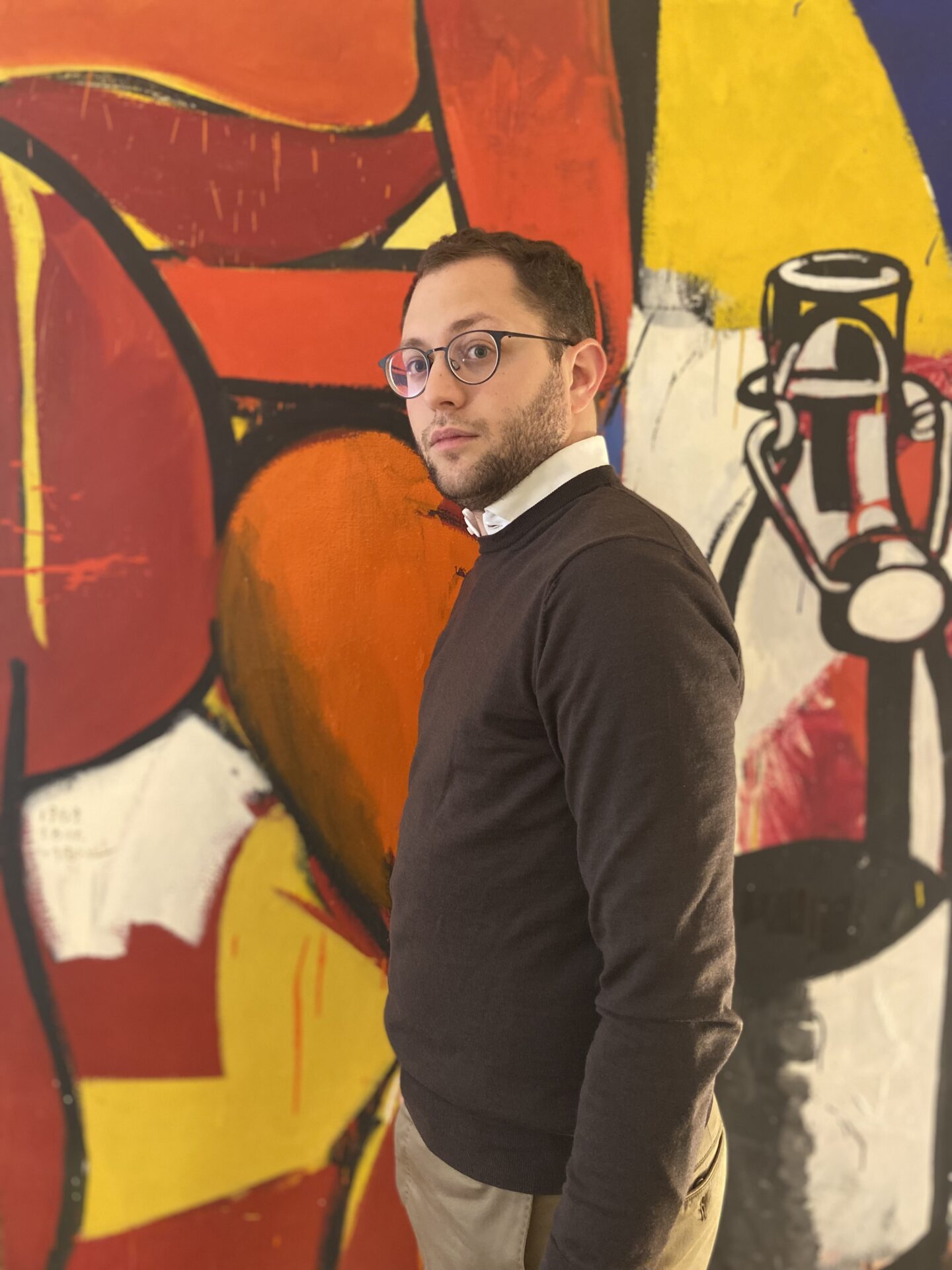«Art dealers had the goods that museums were looking for.»
Five questions to Raphael Selig
Raphael Selig is an art dealer. He is the sixth generation of his family to run Basel’s famed shop, Antiquités Ségal. Naomi Lubrich spoke to him about the relationship between art dealers and museologists, the first Judaica in Basel and changing tastes in old objects.
Naomi Lubrich: Raphael, you are the sixth generation of your family to run Basel’s antique shop, Antiquités Ségal. How was it founded?
Raphael Selig: As far as we know, the founder, Joseph Ségal, came to Basel from Alsace with Napoleon’s soldiers in the early 19th century. He was a peddler and traded in household items, such as carpets and Biedermeier furniture. But his business was short-lived. Like most Jews in Basel, his residence permit ended with Napoleon’s defeat. By 1862, the legal situation for Jews was more favorable, so his son Isaak settled with his grandson Berthold on Spalenberg. Berthold was lucky: He was in business as large museums were opening. The Museum für Völkerkunde (today: Museum der Kulturen) and the Historisches Museum opened in Basel, and the Swiss National Museum opened in Zurich. Art dealers had the goods that museums were looking for, from silver goblets to wooden spoons. The curator of the Museum für Völkerkunde, Eduard Hoffmann-Krayer, bought ca. 100 objects from Antiquités Ségal within ten years.
NL: How important are Judaica for your shop?
RS: Judaica were never of financial importance for our store. Most other Jewish art dealer families would probably say the same. Not many people collected Judaica, except for a small number of well-known families, such as the Ephrussis, the Rothschilds and the Oppenheimers. But Judaism plays an important role in our work for a different reason: When buying objects, Jewish dealers could often rely on a wide network. They were in contact with other Jewish dealers in different countries. I myself have a partner in London. It’s an advantage for purchasing objects.
NL: But a number of people bought Judaica – and still do.
RS: Jews gained equal rights in 1866. Those who experienced the so-called emancipation firsthand were also the first to have financial means. Their predecessors lacked the ability to acquire beautiful objects. A shift then took place around 1870. The new generation desired valuable ritual objects. The Jewish community of Basel for instance commissioned large, representative candlesticks, scrolls and Kiddush cups. Nota bene, these were new creations, not used objects. Judaica before the 19th century are extremely rare. Only Italian communities manufactured Judaica before the 19th century. They were more prosperous and less likely to be expelled from their homes, in contrast to the communities in German-speaking countries.
NL: Have tastes changed?
RS: Yes: Customers used to buy mostly ornamental objects. Today, many prefer objects with a story. As a result, a baroque silverwork can have a longer shelf life than, say, a wooden spoon with an emblem or a Hebrew inscription. But tastes vary. In France, «aristocratic» pieces are very popular. It shouldn’t come as a surprise in the land of so many castles. So tastes vary by region. And they also vary by generation. Our most frequent customers are sixty years old and older. And a large number are forty or younger. But customers between forty and sixty are rare. They prefer to spend their money in other ways, for example on vacations. I’ve also noticed a demographic change: In the 1960s, middle and lower-class families bought antiquities, the latter often in installments. Today, most of our buyers are wealthy. They invest in top objects with lasting value.
NL: Are there bargains, objects we don’t sufficiently appreciate?
RS: Many objects are traded below value. Furniture, for instance, is very cheap. Many old tables and chests of drawers are masterpieces of craftsmanship. They will survive for hundreds more years. Judaica from the Bauhaus period were an insider tip twenty years ago, today they have reached the upper price segment. But landscape paintings are very affordable. What used to trade for five figures now is likely to cross the table for a few thousand francs. Some customers would call them boring. But tomorrow they might change their minds!
NL: Raphael, thank you very much for this interview. I’ll take a closer look at the landscape paintings next time I see one.
verfasst am 26.04.2023




